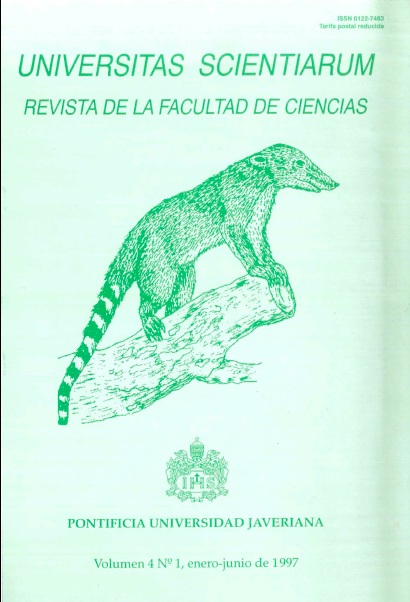Abstract
The allergenic capabilities ofthe poli en of Fraxinus sinensis (Urapán) and Cecropia sp. (Y arumo) were determined in patients with respiratory allergies in the city ofBogotá. Of a total of207 patients wbo were subjected to therelevant allergy skin tests, 20 (9.66%) were positive for F. sinensis and 6 (2.9%) for the extract from Cecropia sp. The allergenicity was confirmed by the determination of specific Iinmunoglobulin E (lgE). Of the twenty patients positive for F. sinensis, only 6 ofthem allowed fora blood test, and5 oftheseshowed a positive reaction to the extract. The bands mainly detected by IgE, using immunodetection after separation by SDS-PAGE and IEF, had molecular weights of95 and 64 kd and IP's of 6.3 and 5.6. When compared to other allergenic proteins according to their crossreactivity, the extract from Olea europaea was found to contain a bigher concentration of relevant allergens than the extracts from F. vlilutina, F. pennsylvanica, F. latifolia and F. mericana. Dueto the small number of serum samples obtained from allergic patients, it is not possible todo an allergogram for the pollen extract of Fraxinus sinensis. As for Cecropia, none of the in vitro tests that were done showed positive resultS, wbich makes it impossible to draw relevant conclusions. These results demonstrate the need of more research that characterizes the allergens peculiar to our atrnosphere in order to optimize the diagnosis and treatrnent of allergy patients in ColombiaUniv. Sci. is registered under a Creative Commons Attribution 4.0 International Public License. Thus, this work may be reproduced, distributed, and publicly shared in digital format, as long as the names of the authors and Pontificia Universidad Javeriana are acknowledged. Others are allowed to quote, adapt, transform, auto-archive, republish, and create based on this material, for any purpose (even commercial ones), provided the authorship is duly acknowledged, a link to the original work is provided, and it is specified if changes have been made. Pontificia Universidad Javeriana does not hold the rights of published works and the authors are solely responsible for the contents of their works; they keep the moral, intellectual, privacy, and publicity rights. Approving the intervention of the work (review, copy-editing, translation, layout) and the following outreach, are granted through an use license and not through an assignment of rights. This means the journal and Pontificia Universidad Javeriana cannot be held responsible for any ethical malpractice by the authors. As a consequence of the protection granted by the use license, the journal is not required to publish recantations or modify information already published, unless the errata stems from the editorial management process. Publishing contents in this journal does not generate royalties for contributors.



